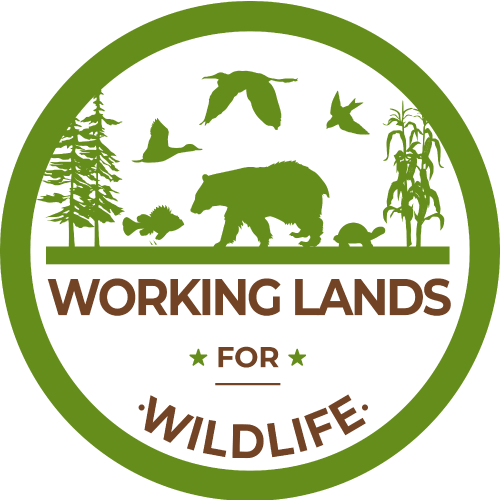-
Bobscapes
-
by
Tab Manager
—
published
Apr 21, 2025
—
filed under:
Apps, Maps, & Data,
WLFW
The Bobscapes Mobile App will help researchers better understand population dynamics and help managers direct resources for habitat work to the areas where those investments will be most effective in recovering the species. Additionally, for those interested, the app will connect landowners to technical experts who can make habitat recommendations and share information on voluntary cost share programs. Lastly, the data provided will assist wildlife biologists in creating a national habitat network of “Bobwhite landscapes” necessary to ensure this species persists for future generations!
Located in
Learning & Tech Transfer
/
Apps, Maps, & Data
-
 Bobwhite history and biology
Bobwhite history and biology
-
by
Web Editor
—
published
Feb 22, 2021
—
last modified
Apr 21, 2023 02:15 PM
—
filed under:
Training Resources,
WLFW,
Webinars and Instructional Videos,
Northern Bobwhite Quail,
Bobwhite Quail Seminar Series,
Video,
Grasslands and Savannas,
Working Lands for Wildlife,
South Carolina Bobwhite Initiative
Dr. Cory Heaton of Clemson University talks about bobwhite biology and history with a focus on habitat requirements. If you think the bobwhite decline is due to something other than habitat, watch this video.
Located in
Training Resources
/
Webinars and Instructional Videos
/
Bobwhite Quail Seminar Series
-
 Bobwhite-specific Ranking Tool (GA example)
Bobwhite-specific Ranking Tool (GA example)
-
by
Bridgett Costanzo
—
published
Mar 10, 2021
—
last modified
Jun 28, 2023 05:55 PM
—
filed under:
Information,
WLFW,
Screening & Ranking,
ranking guidance,
Northern Bobwhite Quail,
quail,
Grasslands and Savannas,
Working Lands for Wildlife,
NRCS Conservation Practices & Materials,
Northern bobwhite
This ranking tool was used in Georgia when they had a separate fund pool for a special bobwhite project.
Located in
Information
/
NRCS Conservation Practices & Materials
/
Screening & Ranking
-
Bog Turtle (Glyptemys muhlenbergii)
-
by
Web Editor
—
published
Apr 30, 2021
—
last modified
May 03, 2021 01:28 PM
—
filed under:
The Nature Conservancy,
WLFW,
Bog Turtle,
TNC,
News,
Working Lands for Wildlife
Learn about The Nature Conservancy's work to save North America's smallest turtle.
Located in
Information Materials
/
Habitat Restoration and Management
-
 Bog Turtle Wildlife Habitat Evaluation Guide (WHEG)
Bog Turtle Wildlife Habitat Evaluation Guide (WHEG)
-
by
Bridgett Costanzo
—
published
Dec 11, 2024
—
filed under:
WLFW,
WHEG,
bog turtle,
Bog Turtle NRCS Conservation Practices and Materials,
Aquatics,
NRCS Conservation Practices & Materials,
Resources
WLFW uses WHEGs to evaluation before and after conditions anticipated from a contract.
Located in
Information Materials
/
NRCS Conservation Practices and Materials
-
 Breakfast with Biologists July 24, 2025
Breakfast with Biologists July 24, 2025
-
by
Web Editor
—
published
Jul 11, 2025
—
filed under:
Grasslands and Savannas,
Working Lands for Wildlife,
WLFW
Featured speakers from Ducks Unlimited, New Jersey Audubon, Quail & Pheasants Forever, Xerces Society, and the U.S. Fish & Wildlife Service will discuss NRCS programs and funding opportunities for upland and wetland habitat restoration, enhancement, and creation projects
Located in
Site Images
-
Brook Trout Conservation Portfolio and Range-wide Assessment
-
by
Tab Manager
—
published
Apr 10, 2024
—
last modified
Apr 21, 2025 06:26 PM
—
filed under:
Brook Trout,
Maps and Data,
WLFW
Interactive webmap and visualization tools.
Located in
Learning & Tech Transfer
/
Apps, Maps, & Data
-
Brook Trout Thermal Habitat Forecasts Catoctin Mountain Park, Maryland & Shenandoah Valley, Virginia
-
by
Tab Manager
—
published
Apr 11, 2024
—
last modified
Apr 21, 2025 06:26 PM
—
filed under:
Brook Trout,
Maps and Data,
WLFW
Users can zoom-in to an area of interest and then compare current conditions against various future scenarios (3 levels of air temperature change x 3 levels of GW sensitivity to air temperature change). The interpretation is simple: red sites are too warm (MWAT > 23 C) and blue sites have suitable temperatures.
Located in
Learning & Tech Transfer
/
Apps, Maps, & Data
-
 Business Case for NWSG Forages w/ Dr. Pat Keyser
Business Case for NWSG Forages w/ Dr. Pat Keyser
-
by
Web Editor
—
published
Dec 30, 2020
—
last modified
Apr 21, 2023 03:36 PM
—
filed under:
Training Resources,
WLFW,
Webinars and Instructional Videos,
Northern Bobwhite Quail,
Webinar,
Grasslands and Savannas,
Working Lands for Wildlife,
Native Warm-Season Grass Forages
Day 1, Session 1. Native Warm-Season Grasses Webinar with Dr. Pat Keyser and Jef Hodges. Presented December 1, 2021.
Located in
Training Resources
/
Webinars and Instructional Videos
/
Webinar- Course on Native Warm-Season Grass Forages and Grazing Management for Bobwhites
-
Cal FIre Incidents
-
by
Web Editor
—
published
Sep 16, 2020
—
last modified
Dec 12, 2023 09:05 PM
—
filed under:
Wildland Fire,
News,
Regional Fire Mapping,
WLFW
The California Department of Forestry and Fire Protection (CAL FIRE) responds to all types of emergencies. When the Department responds to a major CAL FIRE jurisdiction incident, the Department will post incident details to the web site. Major emergency incidents could include large, extended-day wildfires (10 acres or greater), floods, earthquakes, hazardous material spills, etc. This is a summary of all incidents, including those managed by CAL FIRE and other partner agencies.
Located in
Fire Mapping
/
Regional Fire Mapping


